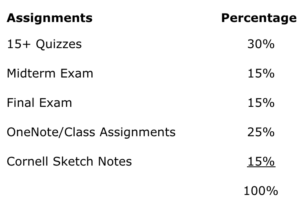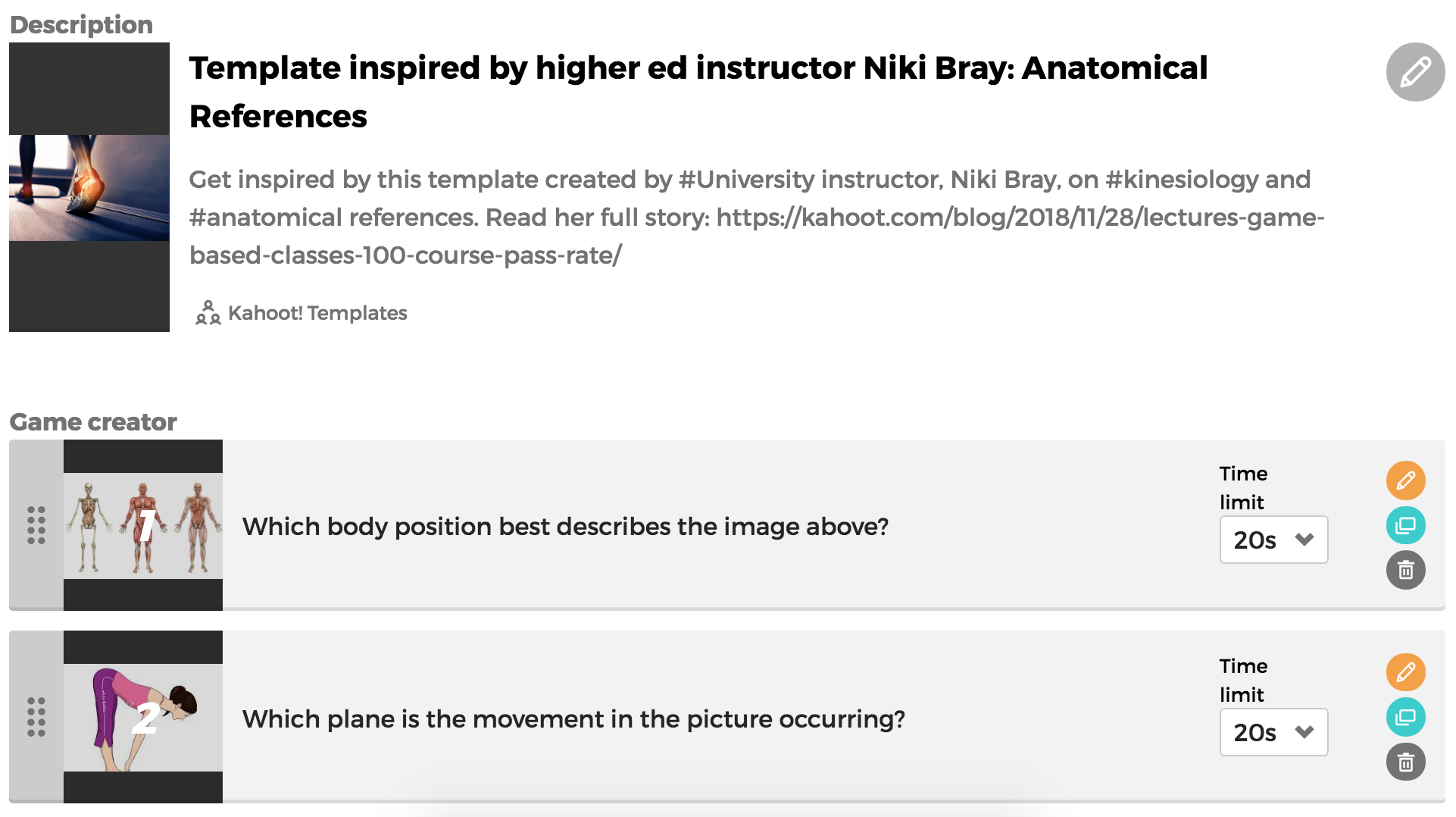When I was asked to teach the Intro to Kinesiology course last year, the historical failure rate for the course was 43% on the first try. As this high failure rate caused many students not to earn their teaching license in the Physical Education Teacher Education, I was tasked with redesigning the course. To solve this challenge, I chose to switch from traditional lecture-based approach used to date to game-based class format, to increase engagement and help students master content. I chose Kahoot! as my primary way to deliver content, and here are the improvements I’ve seen.
Redesigning the course
I made a question bank of more than 500 questions that would be used for both the midterm and final. We played live kahoots in class twice a week and I also provided homework challenge PINs for students to play outside of class. Students were allowed three attempts per quiz and would get to keep their highest score.
I built kahoots using content from the current day’s lessons together with questions from all previous quizzes. This required students to continuously study previous notes and retry past quizzes.

From 57% to 100% course pass rate
Using Kahoot! as the main way to teach transformed my class immensely as it gave immediate feedback to students and myself. This allowed me to focus only on the topics students struggled with instead of discussing concepts they had already mastered. The students loved it! Engagement went up, all students came to class excited, early and prepared and the best thing of all – the failure rate plummeted to zero.
When learners had missed a question, they made notes and highlighted the content they missed. We paused the kahoot each time more than a few students answered incorrectly to discuss the question. I encouraged students to explain why an answer was or was not correct. They were encouraged to look up the answers in their book rather than having me explain it all (sage on the stage versus guide on the side), further deepening their own understanding.
Taking an active and gamified approach to the course truly changed students’ behavior in class. They came prepared with handwritten notes, well organized and ready to ace the game! The student engagement was extremely high and learners often stated how fast class flew by. This all resulted in my students performing above average on their midterm and finals. They were well prepared by the daily quizzes as well as the homework challenges, which was evident in the overall course grades.






